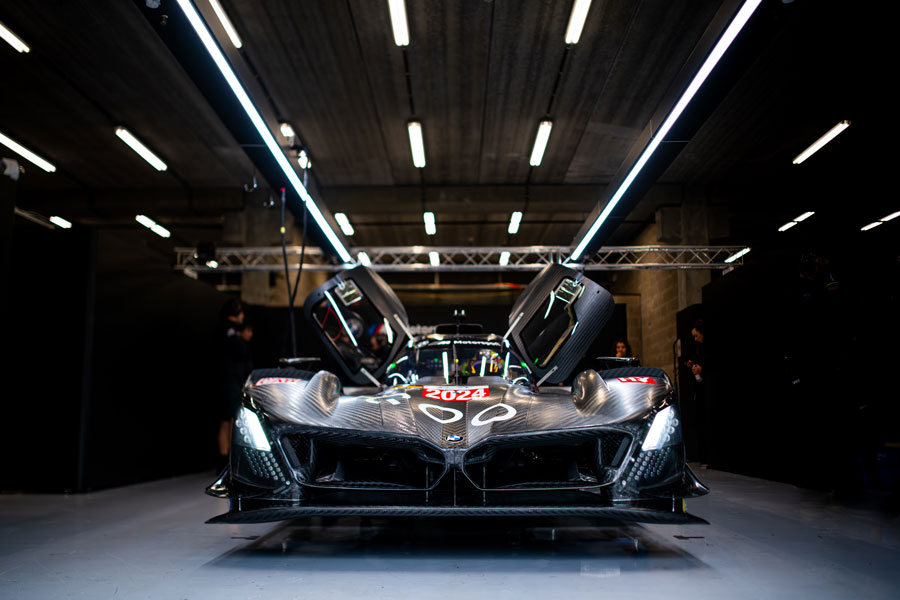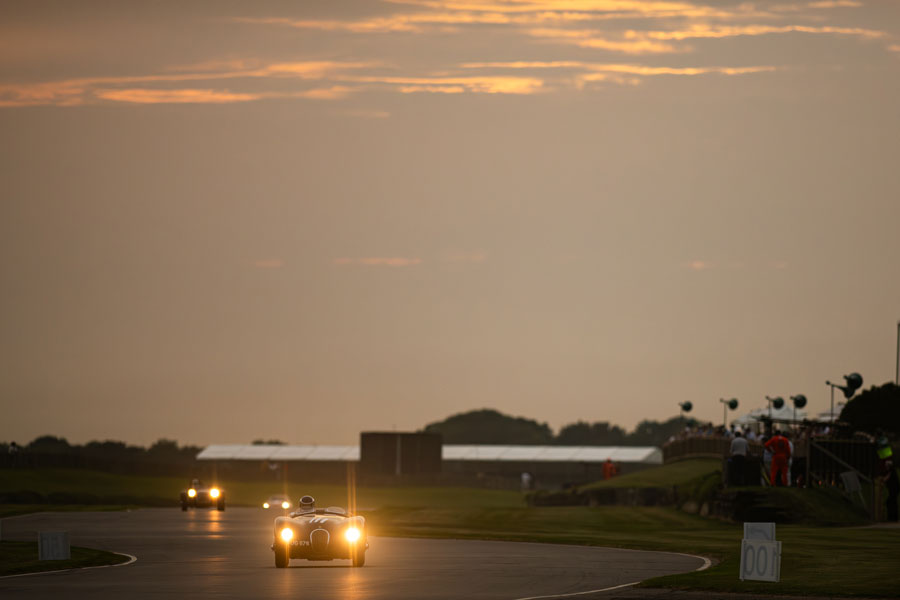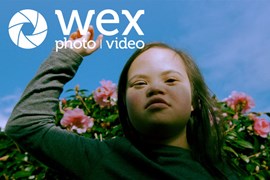
Lou Johnson
- Job title: Freelance Motorsport Photographer
- Education: Photography at the UCA (University for the Creative Arts)
- Website: loujohnsonphoto.com
- Instagram: loujohnsonphoto
- Related jobs: Events photographer, portrait photographer, lighting technician, runner
As someone who has always loved fast cars and taking pictures, Lou Johnson has pretty much hit the jackpot by becoming a motorsport photographer. “Not a day goes by where I’m not grateful for what I’m doing,” she says. “There’s a proper ‘pinch-me’ moment every day.”
She’s made an enormous success of it too. Over the past five years she has shot more than 40 Formula E races, and has become team photographer for Mahindra Racing. She has shot a range of championships, worked with many different teams and sponsors, and in 2019, she made history by becoming the first woman to win Motorsport UK’s Young Motorsport Photographer of the Year.
We were hugely grateful to Lou for agreeing to chat with us all about how she built her career in motorsport photography – and offer a little advice for those looking to do the same. If you’ve always been enamoured with the idea of shooting in the pit lane, read on…
Jon Stapley: Thanks for speaking with us, Lou. To start us off, when you were a kid, what did you want to be when you grew up?
Lou Johnson: Actually, from the age of 14, a motorsport photographer! It was my dad, really – he worked in the motor trade, and would often host people at Brands Hatch, which is my local race track. He really inspired me.
I didn’t miss a race from the age of 14, and it was around that time that I started to get into photography. I’d never really thought about what I wanted to do. School teaches you around that age you need to know your life plan but I didn’t know. But I was starting to really enjoy photography, and I was watching the race one day, and I saw some photographers in the background, and I thought, I wonder if I could do that.
My excitement for photography continued throughout school and later at university. I used those three years to really learn about photography as a medium without pushing a career. I was connecting to the technical parts and getting into film photography.
I left university wondering if I was going to be a photographer. I spent some time simply earning money working at a theatre but still taking pictures and going to race events when it just sort of happened. People started inviting me to shoot, I got more and more experience at races, and it just grew and grew. And I randomly ended up with my dream job. I feel very fortunate that it happened.

JS: Was there a particular event or moment that was your “big break”, as it were?
LJ: I thik it must have been Goodwood Festival of Speed. I was going a lot as a fan – I was a big Jenson Button fan and of Brawn GP [Button’s team at the time]. I managed to take some cool shots of Jenson and the Goodwood festival as a whole, and it so happened that an agency saw those.
A photographer whose work I’d really admired said, “I’ve joined this agency, give them a follow.” And I did, and I was one of the first ten people to like them on Twitter, something crazy like that. They just so happened to be looking for an event photographer, and I'd put on my Twitter bio, “Event and motorsport photographer”, because as well as working in the theatre, I was shooting art gallery launches and all kinds of local events.
The agency looked at my Flickr (it was Flickr days!) and they asked me if I could come along for two events in the Formula E season. Then the next season, they asked if I could join their track team, and I haven’t really left Formula E since. As I’ve done more and more Formula E stuff and become more well-known, different opportunities have opened up.
When people ask me if there’s an event they should go to to learn motorsport photography, I always say Goodwood. Because, while it is crowded, you can get some great shots that show your ability, without needing to have the access that some racetracks would require.
JS: So while you were getting your start in motorsport photography, you were supporting yourself by also shooting events, and working in a theatre? That sounds like… a lot.
LJ: At one point I was balancing a job in a shop as well. I’d often do nine to five in the shop, then come down and work six to midnight in the theatre, and then I would shoot when opportunities came in. Because the other jobs were PAYE, I could choose to prioritise photography opportunities. Had I had a full-time job, I don’t think I’d have had the flexibility that I needed at that time.
As long as I gave my boss a week’s notice, I could chop and change my availability. So it meant that when I was starting to travel with motorsport, I could say, “I'm really sorry, I'm not available this weekend, I'm off to Marrakech.”

JS: Once you’d gone for it and committed to the full freelance photographer life, was there a point when you started to feel like, “Okay, this is working”?
LJ: I don’t think until maybe post-COVID. I took the leap around September 2019, and in December, I got the call from Motorsport UK to say I’d won Young Motorsport Photographer of the Year, which was mega. During my years when I’d been obsessively compiling sketchbooks, I'd also been obsessively looking at the winners from this competition, thinking about how cool it would be to win it. It was only when I was in the industry that I realised that actually a woman hadn't won it before. So then it became, oh, wouldn't it be cool to be the first woman to win it? And I was. Which was mad.
Then COVID happened. But even then, I sort of adapted. I was working with a race team, and they were doing virtual racing. So I asked, “Can I take pictures of that?” I ended up taking screenshots and editing them, just trying to stay connected and relevant. So when everything opened up again, it was almost like it hadn’t stopped.
Sports photography is about building momentum. You might be doing one or two events, one or two races, and they’re few and far between. Then all of a sudden, it just takes working in one championship, and it snowballs. You get to know more people, more opportunities happen, people move from one championship to another and they bring you with them. And it just starts to build and build.
JS: So in simple terms, how is it that you make money?
LJ: You can break it down into two areas. In motorsport, you’ve got the more editorial stream of money, where you go to events, take pictures of the championship or the winner, and sell them to newspapers. In my experience, that’s been an added bonus if I’ve got an image people might want, but it’s never been a finance stream that has been very stable.
The main way I make money is by working with race teams. So, race teams – or the agencies who work for race teams – will always need photography. For sponsors and partnerships, for internal marketing, external marketing, social media. The drivers need photography as well. So that’s where we come in – you’re commissioned by a race team for a season, or for a specific race or event.
It means I get to capture everything – the action in the pits, the garage setup, the behind-the-scenes of the mechanics getting greasy and oily. I like to try and bring people as close to the action as I can.
For motorsport photography, as well as being good at taking pictures of cars, it’s almost more crucial to be able to take good pictures of people, to be a skilled event photographer. More often than not, no race team wants just pictures of cars on the track, unless they're paying for the smallest package possible. It’s all about the documentary side of it.

JS: For any photographer, a tricky thing at the start of a career can be figuring out how much you should be charging. Do you have any advice for people at that early stage – how should they be charging (by the day, for instance?) and what sort of rates?
LJ: Day rates are usually the way that I've traditionally worked, unless I'm working on a race championship rate. If I'm working with a race team for a whole championship, they might have a championship rate based on roughly the number of days, with perhaps a small discount in there. It very much depends.
In motorsport, it depends on the championship you're in as well. If you're in a local event, they won't have the same budget – however, they're probably the best place to start. You can start somewhere with lower budgets, that may only want you for one or two days, but will pay your expenses.
Make sure that you're not out of pocket. You have to have worth in what you're doing. If you are making a loss, you may be having a great time, but what you maybe don't realise is that you're also undermining the rest of the industry as well. There's a really fine balance.
It all depends. Some championships or drivers may only want a small package. That would mean you could charge a couple hundred pounds per driver, and then have lots of drivers that you’re working with. That’s one way of structuring it. Another way to structure it is to try and get into an agency who are working the event, because then you don’t have to worry about sorting the legal side, and they’ll set your day rate for you.
When I started, I had my event photography day rate. It was what I would be happy to walk away with, profit-wise. When I walked into this agency, they said, ‘This will be your day rate.’ And it fell within that bracket that I was happy with.
There are also things like usage you can consider. If you’re offered a day rate on the higher end of your scale, you can offer the client full usage – they can hold the intellectual property or copyright, put the image on a billboard, do whatever they want. Or, if they want to pay less, that’s fine, but the usage would only be for internal social media – the bare minimum. And if there’s a particular image they want for a billboard, you can license that one specifically. That way, they’re getting a package they can afford, and you’re still valuing yourself correctly.
JS: Lastly, you’ve given loads of fantastic advice already, but is there any really key takeaway you’d want to give to someone looking to get into motorsport photography?
LJ: A lot of people come into motorsport photography, or want to, and they’re only taking pictures of cars. People say to me, “Can you look at my pictures?” They'll send me an album, and it will be exactly the same panning car shot for a whole page. I’m like, “Yeah, that's great. I know you can pan. Where are my people shots? Where's my cool shot of the driver getting in the car, where are the shots of the fans?” Show me that you can shoot an event – because that's what you’re going to give a client.
About the Author
Jon Stapley is a London-based freelance writer and journalist who covers photography, art and technology. When not writing about cameras, Jon is a keen photographer who captures the world using his Olympus XA2. His creativity extends to works of fiction and other creative writing, all of which can be found on his website www.jonstapley.com





